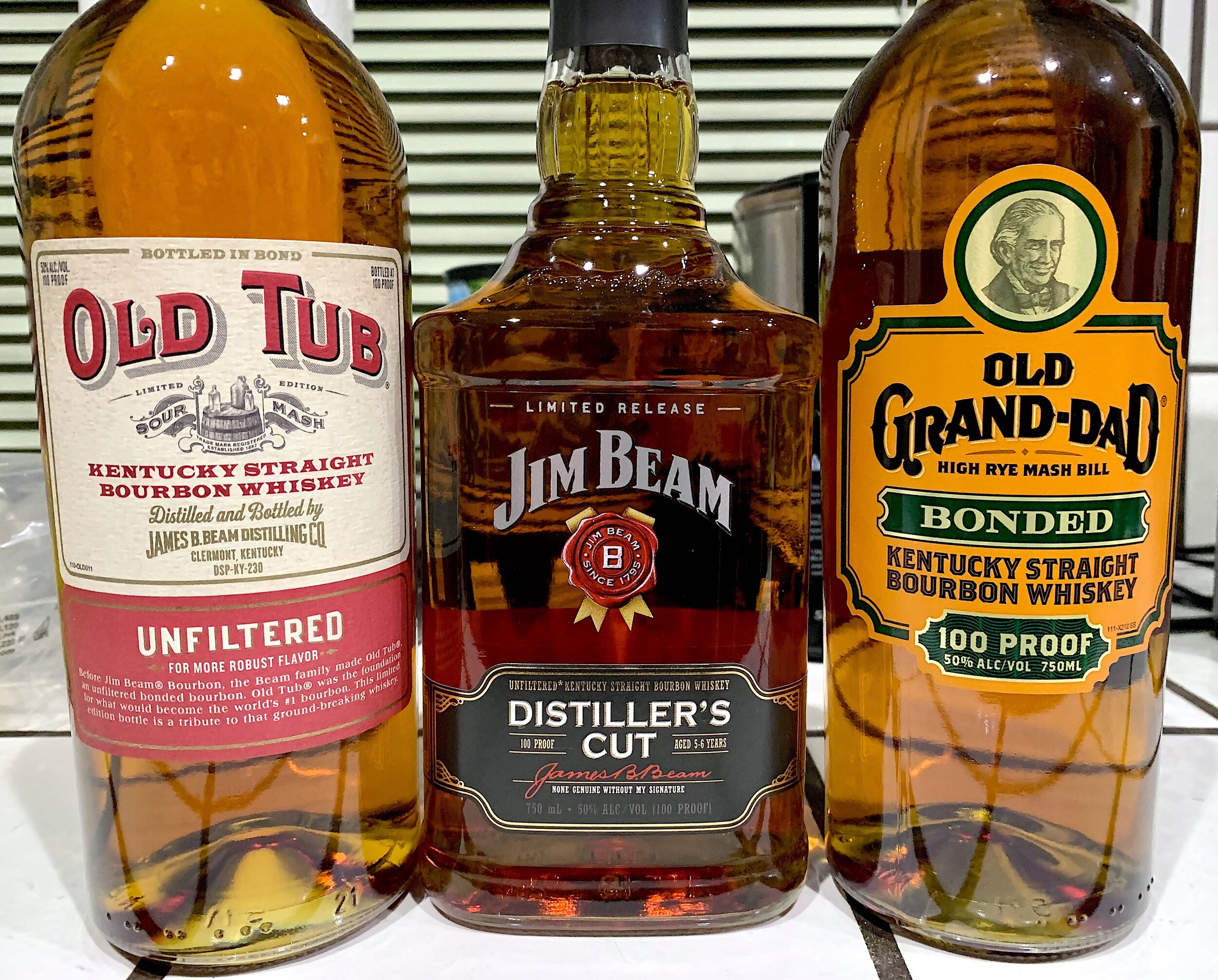As I was talking to my friend Paul about my excitement over Beam’s Old Tub 100 Proof Bottled in Bond Bourbon this past week, he said to me: “Isn’t it just the same as the Jim Beam Distiller’s Cut, but younger and more expensive?”
Ooof. I don’t know. Is it?
As it turns out, the Jim Beam Distillers’s Cut—at $16.99—uses 100 proof whiskies between 5-6 years of age for a pretty hot price, whereas the Old Tub uses 4 year old whiskies at $18.95. Yes, we’re only talking two dollars and a year or two of difference here, but it’s more the idea of a deal that may or may not be the deal you think it is.
Then another friend said to me: “Why would I buy the Old Tub instead of Old Grand-Dad? Sure it’s a few bucks cheaper, but OGD is already perfect as it is.”
Ugh, will someone please just share my enthusiasm about Old Tub?!
Beam has so many good values already that when they present a new bargain label, they end up competing against themselves! Nevertheless, I was pretty sure that Old Tub’s outstanding flavor would hold up against the other two stalwarts because it’s one of the best $20 whiskies I’ve had in quite some time. But there’s only one thing you can do when presented with such questions, and that’s get a bottle of each one and do a side-by-side tasting.
(As an aside, in my personal experience it’s fun to taste $100+ bottles, but there are few things more exhilarating for me than splitting hairs on $20 bottles of booze to determine the ultimate value.)
First Tasting:
Old Tub: The sweetness of the whiskey is superbly balanced by the graininess. In the same way that old school food wines dial it back in order to pair well with food, the Old Tub tastes like a Bourbon with proper restraint and I appreciate that.
Jim Beam Distiller’s Cut: You can definitely taste those extra few years in wood right away as the sweetness and the richness of the Bourbon comes across instantly on the palate. Unfortunately, it falls short on the finish so it’s sort of a one-trick pony.
Old Grand-Dad: Combine the best parts of the Old Tub with the richness of the Distiller’s Cut, and that’s the OGD. Clear winner.
Before you start putting the OGD into your shopping cart, let me fill in on round two and another important detail you should know: Beam has discontinued the Distiller’s Cut, so I took everything that was left in the warehouse. If that’s something you want to try, do so sooner than later.
Second Tasting (two days later)
Old Tub: An amazing nose, loaded with spice, cinnamon red hots, and tons of sweet oak. More on the palate. So, so, so pleasing.
Jim Beam Distiller’s Cut: Less fragrant on the nose, but plenty of vanilla and oak. Again, sweet up front, thin in the back. Good for $16.99, but wouldn’t be on my short list (plus, I don’t like the bottle, so it would be hidden in my bar behind the others).
Old Grand-Dad: Again, very good, but somehow less dynamic than I remembered it before. Bananas Foster on the nose, more sweet oak, but if I had to choose between bananas and cinnamon, I’m going with the latter 9 out of 10 times. Hence, Old Tub.
I could obviously go back for a third and fourth tasting, and I might feel differently, but after two sittings I can tell you this for certain:
You NEED a bottle of Old Tub. For the price, it’s a hot, hot, hot deal.
Old Grand-Dad is a legendary whiskey for a reason. If you’ve never had it, add that one in, too.
Jim Beam Distiller’s Cut is good, but the specs won’t save you here. Sure it’s older and less expensive, but it doesn’t taste as good as the other two.
Nevertheless, you still may want to buy the Distiller’s Cut as it’s getting discontinued according to my source at Beam.
Given that all three whiskies combined will run you $60, maybe you should just get all three.
-David Driscoll












